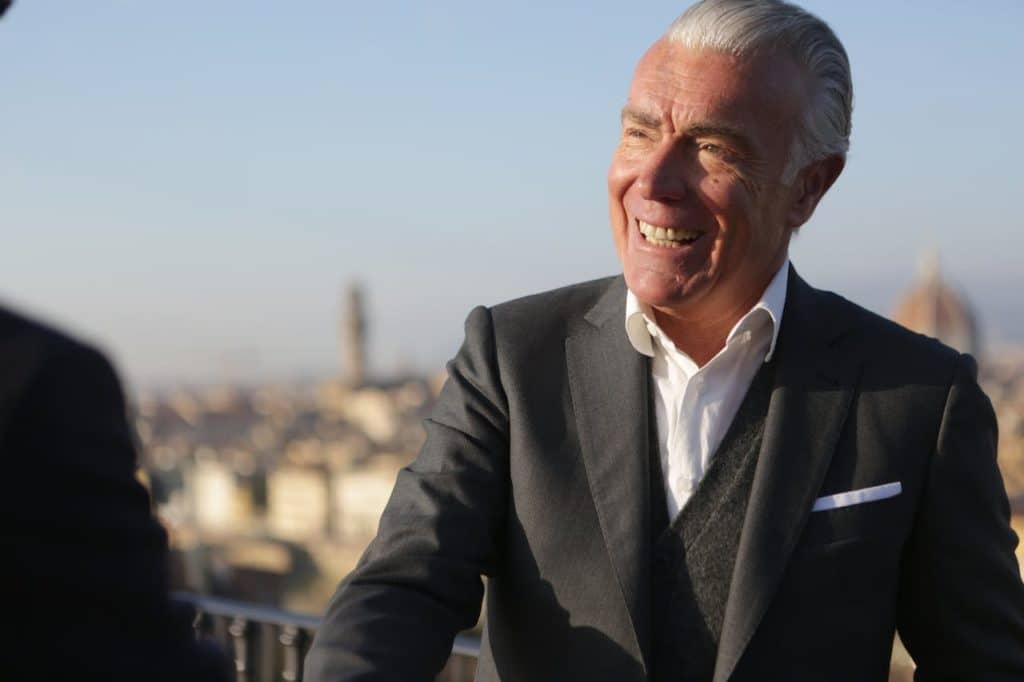Leadership styles are at the core of management strategies and their influence permeates through the various layers of an organization. These styles not only define the manner in which leaders guide and direct their teams, but they also mold the workplace culture and affect how decisions are made and executed. From the more directive autocratic and democratic styles to the transformative and hands-off approach of laissez-faire, each leadership style has distinct attributes that contribute differently to the success of an organization. The choice of style can be contingent on several factors such as the industry norms, the size of the company, the demographics and dynamics of the team, and the unique challenges that the organization faces.
The leadership style adopted by a leader has profound implications for business success. It influences how team members collaborate, how decisions are shaped, and the overall work environment of the company. Leaders who are able to inspire and motivate their teams can drive innovation and increase productivity, which are critical components of business success. For a company to reach and sustain its peak performance, it is essential that its leaders understand and effectively implement the leadership styles that best align with their organization’s goals and culture.

Top 14 Most Famous CEOs and Their Leadership Styles:
Jeff Bezos of Amazon
Jeff Bezos, the visionary behind Amazon, has built one of the most powerful companies on the globe through his unique leadership approach. His journey from founding an online bookstore to leading a conglomerate that touches nearly every aspect of e-commerce, cloud computing, and artificial intelligence is a testament to his distinctive management style. His philosophy centers around customer satisfaction, strategic long-term planning, and a consistent push for innovation.
The leadership framework Bezos has adopted was shaped heavily by his steadfast focus on the future. He withstood various market fluctuations and challenges with a resolve rooted in his confidence in Amazon’s long-term success. This ‘Day 1’ philosophy that Bezos espouses revolves around maintaining a startup’s sense of urgency, staying aligned with consumer trends, and prioritizing customer needs above all else.
Bezos’ leadership is characterized by a blend of transformational qualities, fostering a culture of innovation, and autocratic tendencies, retaining final decision-making authority. This amalgamation has created an environment where employees are pushed to excel and think outside the box while aligning closely with the company’s vision and goals.
The influence of Bezos’ leadership on Amazon has been monumental. His drive for excellence and his relentless focus on customers have entrenched Amazon as a benchmark in the marketplace, illustrating the impact of a strong, visionary leader on a company’s trajectory.
Elon Musk of Tesla and SpaceX
Elon Musk is a figure synonymous with pioneering advances in technology, particularly in the realms of electric vehicles and space exploration. Known for taking calculated risks, Musk has faced his share of setbacks, yet his commitment to his vision has never wavered, often leading him to remarkable success.
Musk’s leadership approach has been informed by his admiration for historical figures who themselves were trailblazers of innovation. He draws parallels with the likes of Edison and Jobs in his pursuit of a future that is both sustainable on Earth and reaches into the cosmos. His dedication to these ideals is evident in every aspect of his leadership style.
Musk exemplifies transformational leadership. He inspires his teams at Tesla and SpaceX to pursue ambitious goals and challenge the status quo. He is known for his hands-on approach, especially in times of crisis, working closely with his employees to overcome obstacles and achieve their shared objectives.
The impact of Musk’s leadership on both Tesla and SpaceX has been profound. Under his guidance, SpaceX has rekindled public and governmental interest in space exploration, while Tesla has become a leader in the electric vehicle market. His penchant for risk-taking and innovation has shifted entire industries, underlining the transformative power of visionary leadership.
Indra Nooyi of PepsiCo
Indra Nooyi’s tenure at PepsiCo is celebrated for her forward-thinking leadership that prioritized both immediate performance and sustainable growth. Her leadership style was characterized by a strong emphasis on long-term strategy, social responsibility, and fostering a diverse and inclusive work environment.
Nooyi’s upbringing and cultural experiences imbued her with a tenacity that she carried into her professional life. The challenges she faced and overcame in her early years are mirrored in her resilient approach to leadership at PepsiCo. Her global perspective has been a valuable asset in understanding and navigating the complex international market.
Her approach to leadership was transformational, focusing on encouraging individual talent and advocating for environmentally conscious practices within PepsiCo. She worked to nurture the human capital within the company, believing that a strong and inclusive corporate culture was key to driving innovation and growth.
During Nooyi’s leadership, PepsiCo saw a significant transformation. She oversaw an 80% increase in sales and steered the company towards offering healthier product choices, broadening the brand’s appeal and setting the stage for long-term growth and market leadership.

Jack Ma of Alibaba
Jack Ma, the charismatic founder of Alibaba, has become a figure of inspiration for entrepreneurs around the globe. From humble beginnings, Ma has grown Alibaba into a powerhouse in e-commerce, digital payments, and cloud computing, revolutionizing the way business is done in Asia and beyond.
Ma’s leadership style has been significantly shaped by his experiences during China’s cultural revolution. The challenges he faced during that tumultuous period instilled in him a resilience and tenacity that would become hallmarks of his approach to business and leadership.
Ma’s leadership style is a hybrid of democratic and transformational elements. He places a high value on entrepreneurship, cultivating a strong corporate culture, and learning from setbacks. His leadership is characterized by a profound belief in the power of teamwork and the potential of his employees to overcome any challenge.
Under Ma’s stewardship, Alibaba has achieved extraordinary growth, transforming it into a global e-commerce and technology leader. His people-centric approach and his emphasis on fostering an open and innovative corporate culture have been central to the company’s remarkable ascent in the global marketplace.
Examination of Leadership Styles and Business Success
Similarities and Differences among the Leadership Styles
Leaders across various industries, despite their distinct approaches, often exhibit several overlapping traits such as perseverance, innovative thinking, and the ability to envision long-term goals. These shared qualities are foundational to their success, allowing them to guide their organizations effectively through various challenges and opportunities.
However, these leaders diverge significantly in their execution of strategies, decision-making processes, and risk management. Some may adopt a more cautious approach, meticulously analyzing every decision, while others thrive on taking bold risks. The focus areas also vary, with some leaders emphasizing product innovation, others on market expansion, or human resource development.
Understanding these similarities and differences is crucial for emerging leaders. It highlights the importance of developing a unique leadership style that aligns with personal strengths and the specific needs of their organization, while also incorporating universally beneficial traits like resilience and forward-thinking.

Lessons to be Learned from these Leadership Styles
The journeys and achievements of these leaders provide valuable lessons in leadership. Key among them is the significance of having a clear and compelling vision. A strong vision acts as a guiding star for the organization, shaping strategies and decisions.
Courage is another critical trait exemplified by successful leaders. This includes the courage to disrupt traditional models, innovate in the face of uncertainty, and persist despite setbacks. Successful leaders often demonstrate an unwavering commitment to their vision, even when it involves challenging established norms or venturing into uncharted territories.
Resilience is another essential attribute. The ability to bounce back from failures and setbacks, to learn from them, and to continue pursuing goals relentlessly is a hallmark of successful leadership. This resilience inspires and galvanizes entire organizations to strive for excellence even in difficult times.
The Influence of Leadership Styles on Employees
Employee Satisfaction and Motivation
The impact of leadership styles on employee satisfaction and motivation cannot be overstated. Employees are more likely to feel satisfied and motivated when they work under leaders who are not only effective in their roles but also demonstrate genuine concern for their team’s well-being and professional growth.
Leaders who communicate clearly, set realistic and challenging goals, and recognize the efforts of their team members create a positive and empowering work environment. This environment fosters a sense of belonging and purpose among employees, driving them to be more engaged and committed to their work.
Employee Performance and Productivity
The way a leader behaves and interacts with their team has a direct correlation with employee performance and productivity. Leaders who create a supportive and enabling environment help boost the confidence and capabilities of their team members. When employees feel empowered and valued, they are more likely to take initiative, think creatively, and put in their best effort.
Furthermore, leaders who establish clear expectations and provide regular feedback help their team members understand their roles better and how they contribute to the organization’s goals. This clarity and continuous guidance can significantly elevate the performance and productivity of the team.
Employee Retention
Employee retention is often a reflection of the quality of leadership within an organization. When leaders are fair, engaging, and supportive, they create a work environment that employees are reluctant to leave. Such leaders understand the importance of fostering a positive workplace culture, where employees feel valued, respected, and part of a larger community.
Consistently high employee turnover is frequently a symptom of leadership shortcomings. It could indicate a lack of recognition, poor communication, inadequate growth opportunities, or a generally unsupportive work atmosphere. On the other hand, strong leadership that prioritizes employee well-being and professional development tends to result in higher loyalty and lower turnover rates.

The Role of Leadership Styles in Company Culture
The significance of leadership in crafting and sustaining company culture is paramount. Leadership, at its core, is not just about decision-making and strategy; it’s about interpersonal dynamics, communication styles, and the values emphasized by those at the helm. Leaders play a pivotal role in setting the tone for organizational culture, dictating the pace, passion, and principles that will drive their teams.
One of the fundamental ways that leadership molds company culture is through communication. How leaders communicate – both what they say and how they say it – sets expectations and establishes norms. When leaders prioritize open dialogue, active listening, and responsive feedback, it creates an atmosphere of trust and inclusivity. This, in turn, fosters a positive company culture where every individual feels valued and heard.
Various leadership styles give rise to distinct organizational cultures. For instance, leaders who employ a democratic style are likely to cultivate a culture that thrives on collaboration, teamwork, and joint decision-making. On the other hand, transformational leaders, with their forward-thinking and change-oriented approach, often breed cultures steeped in innovation, adaptability, and a drive for continual improvement.
Several notable companies offer insightful examples of how leadership directly molds company culture. Tech giants like Google and Apple, as well as customer-centric firms like Zappos, have etched their mark on the corporate world with distinct cultures born from unique leadership styles. Studying these cases can shed light on the symbiotic relationship between leadership approaches, employee engagement, organizational ethos, and the broader trajectory of business success.
Application and Relevance of Famous CEOs Leadership Styles Today
The leadership tenets of iconic CEOs, both past and present, continue to reverberate in today’s ever-evolving business landscape. These renowned leaders, through their distinct styles and philosophies, have charted paths of success that remain instructive for current and aspiring leaders. Their stories underscore the imperatives of clear vision, relentless innovation, calculated risk-taking, resilience in the face of challenges, and a commitment to placing people at the center of any leadership strategy.
The nuances of different industries and the specific challenges posed by various company sizes make it imperative for today’s leaders to exhibit flexibility in their leadership styles. A one-size-fits-all approach seldom works. Leaders must possess the acumen to discern the unique demands of their context and mold their leadership approach accordingly. Striking the right balance between exercising control, fostering collaboration, and championing a clear organizational vision is crucial.
Modern success stories underscore the enduring relevance of tried-and-tested leadership styles. Take, for example, Satya Nadella at Microsoft or Brian Chesky at Airbnb. Both leaders, while operating in different sectors and facing disparate challenges, have exhibited leadership traits reminiscent of iconic CEOs of yesteryears. Their emphasis on innovation, long-term strategic vision, and nurturing a deeply engaged workforce has catalyzed outstanding achievements for their respective companies. Such examples stand testament to the idea that while the business world is in constant flux, the core principles of effective leadership remain remarkably consistent.
